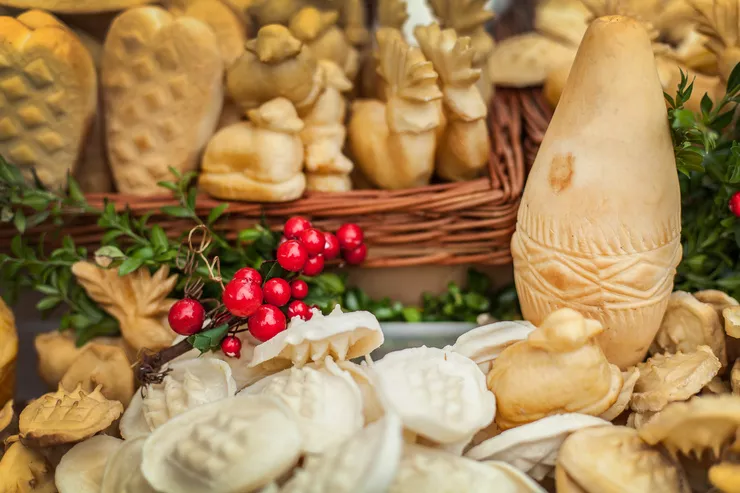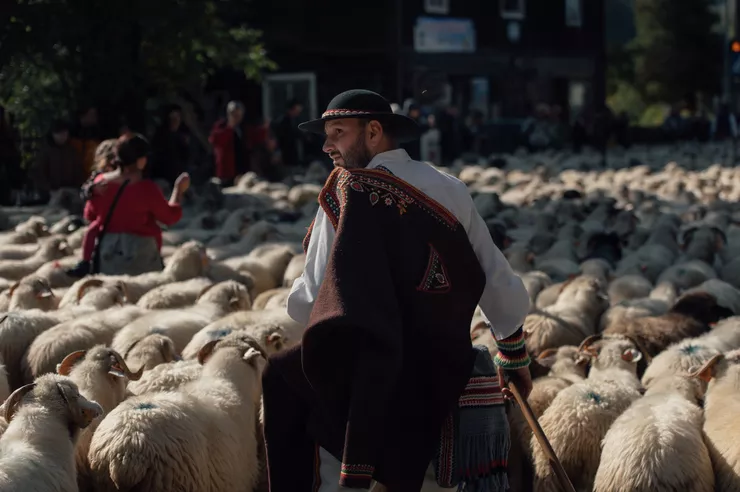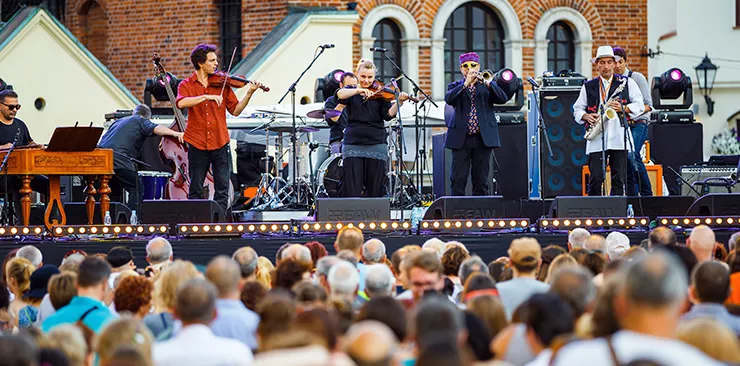





Where sheep roam.
The largest 21st-century transhumance had the shepherds walk their sheep, sheepdogs, donkeys, and horses for around 10 miles each day, making them cover over 1200 km (750 miles) along the arch of the Carpathian Mountains during the season. The route started in Romania and continued across the territories of Ukraine, Slovakia, and Poland to end in Czechia. The sheep first walked this route centuries ago. It was discovered and perfected by Wallachians, a sheepherding people who, around the 15th century, arrived in Poland from Transylvania with their rich culture that is still very much alive in Highlander tradition.

Such mass transhumances are now all but rare. What has, however, survived, are the redyki: the festivals organised when the shepherds and sheep leave the valleys to graze in the mountains, and when they return from them for the winter. Especially the latter thrive and have developed into splendid festivals of local folklore. This year’s most noteworthy redyk will take place in Szczawnica on 14 October. It offers the unique opportunity to see thousands of sheep coming down from the mountains and crossing the whole town (which blocks all traffic in Szczawnica for a few hours) to be returned to their owners in a large lawn by the raftsmen’s quay.
Marching at the head of this extraordinary procession are the herders, now assisted not only by their dogs who still do their duty, but also by Highlanders rejoicing in the happy return of their precious flocks. The riders in traditional costumes on beautifully dressed horses and in colourful open carriages are certainly among the most eagerly photographed. This last march of the season is joined by Highlander bands, who then play their music on a special stage long into the night, among stalls selling roasted lamb, homemade sausages, and – last but certainly not least – sheep cheeses, notably the famous local Oscypek and Bundz.
The joyful event is one of the ways of retaining the memory of the Wallachians and the transhumances of old. Another is showing the beauty of the routes they took and the difficulty of the shepherding profession. For this reason, Małopolska designed 15 signposted thematic trails, most of them for hikers but also for cyclists (2) and drivers (1), letting you become familiar with Wallachians and their heritage.
Walking along the trails of vernacular culture is a perfect alternative to mainstream hiking in the mountains (and perhaps an equally perfect respite from the hustle and bustle of the most “touristy” places) as they lead you among the stunning landscapes of open meadows and rolling hills. Scattered along those trails are bacówki: places where the shepherds milk their sheep and make traditional products of fresh sheep milk during the season. A long-awaited chance for the gourmet, and a must-see for every curious soul.
The calendar of transhumance – sheep “pilgrimages” to mountain meadows was very closely linked to church festivities, as it started on the Feast of St Adalbert (Wojciech), patron saint of Poland) on 23 April and ended on Michaelmas (the feast of St Michael the Archangel) on 29 September. All the stages of transhumance were accompanied by half-magic and half-religious rites and practices to protect the flocks from evil powers and guarantee their successful return to their homes in the valleys.
The Historical Trail is a footpath that runs along the charming meadows on the crest of the Gorce Mountains ridge, where sheep used to graze, and to Ochotnica – the village considered the main centre of Wallachian culture in Podhale. It offers beautiful vistas of the Beskidy and Tatra mountains, also from the panoramic tower on Mt Gorc. Besides offering breathtaking views of Poland’s highest mountains, the longest of the footpath (67km/45mi) crosses three regions and takes you to some of the bacówki – original shepherd’s shelters.
Visiting a bacówka in the season, don’t forget to ask for Oscypek (PGI) and Bundz cheeses. The first is a smoked cheese made of salted sheep milk exclusive to the Polish Highlands around Zakopane. If you are adventurous enough, you can go for żentyca (or żyntyca) sheep milk whey, a byproduct of the latter.








